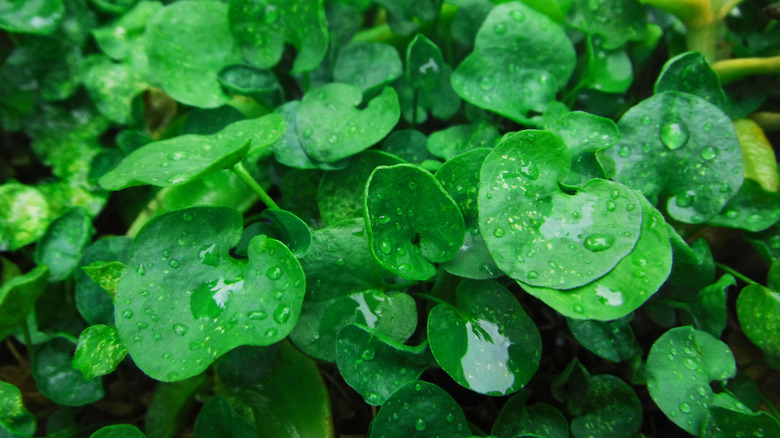For those seasoned in lawn care, the ceaseless cycle of watering, mowing, and fertilizing may teeter on the brink of a love-hate relationship. Dichondra comes in here with a promise to revolutionize your lawn and curb your gardening frustrations. But is dichondra a good alternative to grass, you ask? Indeed! Besides being an enticing show-stopper, its easy-to-maintain nature and remarkable drought tolerance are win-win. But like a coin, the other side shadows a few complications, including a less-than-stellar performance under heavy foot traffic.
Establishing a dichondra lawn can be achieved through sowing seeds in well-prepared soil, ideally from spring to early fall. For a more immediate “greening-out,” consider spreading dichondra stem cuttings, securing a 4-inch gap between each for optimal growth. Pairing this with an annual fertilization plan will ensure your Dichondra lawn thrives unabated. With the basics covered, let’s dive deeper into the merits of trading in your conventional lawn for Dichondra.
Enhanced aesthetics and less lawn maintenance

Dichondra’s leaves weaves a dense tapestry that enhances your garden’s aesthetic appeal. Far from grass strands you’ve grown accustomed to, Dichondra’s uncommon leaf shape stages a refreshing change, adding a vibrant surge of character to your lawn that effortlessly grabs attention and admiration. Plus, this fascinating plant doesn’t wither into dullness as the seasons change. Though a warm-season plant, Dichondra still radiates its vibrant green throughout the colder months, making it an extraordinary year-round spectacle.
Let’s shift gears and dive into an aspect of Dichondra that might be music to any homeowner’s ears: Its impressively low maintenance requirements. Wave goodbye to arduous mowing duties, as the relatively short stature of Dichondra means it doesn’t necessitate constant shearing. Only occasionally (when it dares to peak above 2 inches) would it require a trim. Consider the effort and money spent on mowing — now, you can cut all that right out of the equation thanks to this hardy plant.
Moreover, dichondra excels in the face of water challenges. Its remarkable drought tolerance quashes the excessive water needs synonymous with typical turf lawns. Less watering equals more savings on your utility bill. As such, we find this groundcover plant a great grass alternative for dry areas. However, in your quest to keep your no-mow lawn in top shape, remember the golden rule: Allow the soil to dry thoroughly between watering sessions. Despite its many rugged traits, dichondra falls short of thriving in water-saturated environments.
An adaptable, fast-growing soil erosion control warrior
YouTube
Nature doesn’t always extend the courtesy of fertile soil and perfect drainage. Unsurprisingly, a typical grass lawn often throws a pouty fit under these challenging conditions, demanding laborious soil amendments or alternative solutions. Enter dichondra, the unsung turf warrior, agile in its adaptability, thriving where grasses scowl. This tenacious ground cover isn’t a prima donna about its stage — it graciously performs even on low-fertilized soils. Sprinkle in a handful of dichondra seeds and watch them transform the most downtrodden earth into a verdant flat of lush green.
Now, onto the misery of soil erosion. Tired of watching your hard work get blown away or washed right off the slope by the elements? Dichondra can put those worries to bed. Its secret weapon is a sprawling, mat-like root system, a tenacious, unseen labyrinth that holds soil particles together like an unyielding army, regardless of the terrain. It’s the sentry your yard needs against soil erosion, standing its ground even with nature’s relentless offensive of wind and surface runoff. You’ll also love how this plant races its way to growth, transforming those barren patches in your yard into fast-spreading verdant. Overall, dichondra is a worthy consideration for your garden — it doesn’t just make the best of challenging conditions (like drought); count on it for less strenuous lawn care.